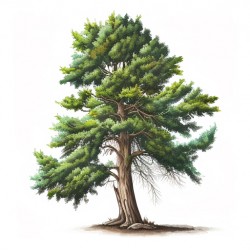Your shopping cart is empty!
MENU

Trees are a vital part of life on Earth. They provide us with oxygen, purify our air, and provide us with a habitat for numerous species of wildlife. In addition to their natural benefits, trees also have tremendous economic and social benefits, including reducing air and water pollution, providing food and fiber, and providing wildlife habitat.
Trees play a crucial role in the global carbon cycle. They absorb carbon dioxide, a major contributor to climate change, and release oxygen into the atmosphere. The amount of carbon stored in a single tree can vary greatly depending on its size, species, and age. In addition to storing carbon, trees also reduce carbon dioxide in the atmosphere by taking it in during photosynthesis. This helps keep our air clean, and helps to reduce global warming.
Trees also help to protect our water resources. By providing shade, trees help to keep our water sources cooler, reducing evaporation and runoff. Trees also act as natural filters for pollutants in the air, absorbing them and helping to keep the air clean. In addition, trees can help reduce the risk of flooding by helping to slow down the flow of water and preventing erosion.
In addition to their environmental benefits, trees can also provide economic benefits. In urban areas, trees help to reduce heat island effect, which can lower energy costs. Trees can also increase property values, and provide food and fuel for people living in developing countries.
Finally, trees also provide tremendous social benefits. Trees can provide places for people to relax and socialize, and provide natural beauty to our landscapes. They can also provide a habitat for wildlife and other species, helping to create a more diverse and healthy ecosystem.
Trees are an invaluable part of our planet. We must take care to protect them, and ensure that future generations are able to benefit from their myriad of benefits. Conserving and protecting our forests is an important part of preserving our environment and our way of life.